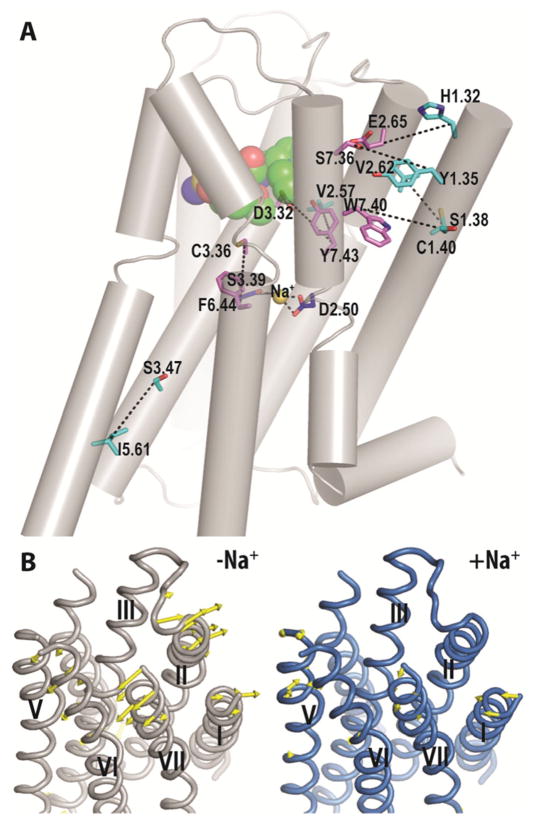Fig. 4.
Allosteric impact of Na+ on the TM domain. (A) The Na+-modulated interaction network commonly found in D3R–sulpiride and D2R–sulpiride complexes is shown in black dotted lines drawn between residue pairs with significantly different interaction frequencies in the Na+-bound condition compared to the -unbound condition. The residues shown are for D3R. The Na+-coordinating residues are in blue sticks; the residues that may involve in ligand binding18 are in violet sticks; the remaining residues in the network are in cyan sticks. Sulpiride is in green spheres. (B) The principal mode of motion calculated by the principal component analysis is shown in yellow arrows for the D3R-sulpiride complex in the Na+-bound (blue) and -unbound (gray) conditions.

